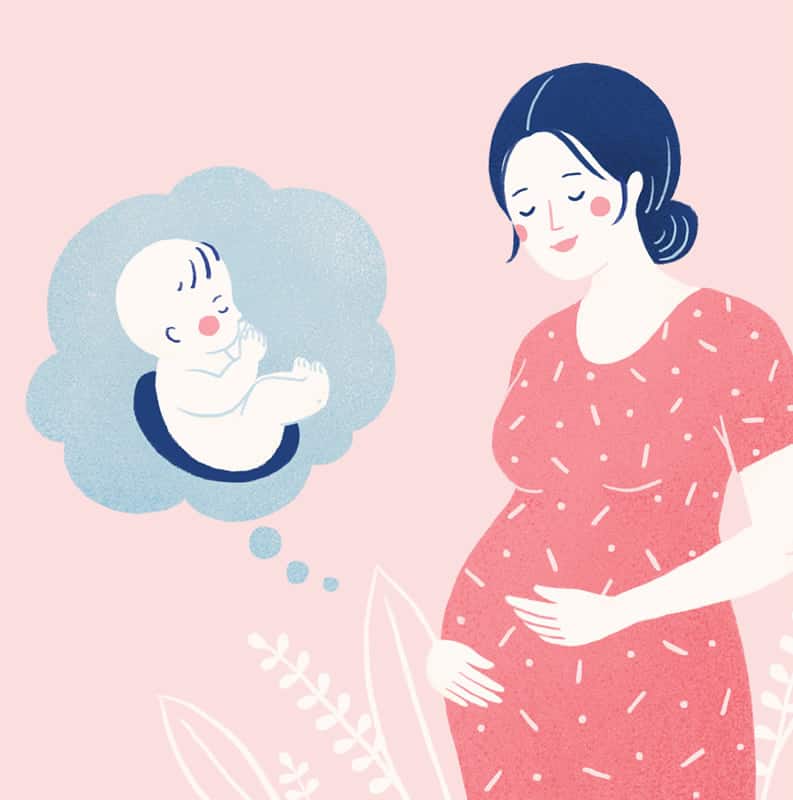Taking Back Breech Birth: My Journey so Far
Sharyn Lock – Independent Midwife
Published in The Practising Midwife Volume 22 Issue 7 Jul/Aug 2019
Early breech experience
I was a breech baby. My mother never mentioned this as a big deal. The only details I recall hearing, were that her waters went in the early hours, and that she birthed me about 8am – a classic swift and efficient breech labour. I don’t think Mum ever knew that birthing breech babies vaginally had become an issue of debate within her lifetime.
I almost saw a breech birth when I was a student in 2013 – but not quite. The nulliparous woman involved had come in at 8am at term, waters gone but no contractions. She returned at 4pm, contracting regularly, and was found to be 8cm dilated; with a breech presentation. Off she was whisked for a caesarean section. As she was wheeled into the distance, somewhat stunned to find her birth labelled an emergency, when she thought she was doing so well, I asked the labour ward co-ordinator what the reason was that she was going for a section. Although a foot had been sighted, the baby was not a true footling breech and its rump was obviously doing a grand job of dilating the cervix efficiently.
“Ah, you need to read about the Hannah term breech trial, which compared section for breech with vaginal breech birth,” she told me, in somewhat surprised tones. We looked at each other blankly, her wondering how a student could have missed such a pivotal study, and me thinking, “But I have read it – and read about how flawed it was: how it did not ensure that the pracitioners it assigned to vaginal breech management had appropriate skills (Sanders and Steel 2014); how its predictions regarding negative impact of vaginal breech birth on child development never eventuated (Whyte et al 2004); how the PROMODA study (Goffinet et al 2006) had long since come to far more positive conclusions about vaginal breech birth; and how, five years after the Hannah Trial occurred, it was suggested that its recommendations should, in fact, be completely withdrawn (Glezerman 2006).”
By the time I qualified and began to work alongside an independent midwife with 25 years’ experience, I had learnt the missing piece of the puzzle – that the Hannah trial had, in virtually one fell swoop, resulted in a swift and dramatic global loss of vaginal breech birth skills, leaving hospitals to the present day, regularly resorting to emergency sections for breech babies dianosed during labour: the most high-risk approach of all for their mothers (Impey et al 2017). Glezerman (2006) commented: “Rarely in medical history have the results of a single research study so profoundly and so ubiquitously changed practice.”
Hence that caesarean section, back when I was a student. In the UK, it seemed, the handful of remaining confident vaginal breech birth practitioners were, often, independent midwives such as Mary Cronk: the ones with faith in the design of birth, and a passion for supporting women’s informed choices, even if they went against the prevailing view of what was clinically the ‘right’ thing to do. And so, as an IM, I began again to learn. However, five years on, I had still never seen a vaginal breech birth. Last year, I thought I was on track to see a planned one at home – but the baby not only birthed so quickly that, as second midwife, I never made it, but it also came out cephalic!
Learning by teaching

Still, I made sure that I knew modern breech birth theory back-to-front and upside down (do you see what I did there?) because I could, of course, have a surprise one at home at any time. To be doubly sure, I volunteered to help teach the theory on my local trust’s obstetric emergency study days, cheerfully owning up to my lack of practical experience.
Instead, I shared everything I’ve learnt about the all-fours/upright approach from attending study days and the excellent international conferences hosted by the Sheffield breech team. I then turned the floor over to participants who had actually attended breech births, to pool their practical knowledge, and finally, together, we practised the interventions for any issues, encompassing both upright and lithotomy positions. My instinct that teaching is a good way to learn turns out to be evidence-based (Walker et al 2018).
Seeking elusive breech birth

But this year I decided enough was enough. If a vaginal breech birth wouldn’t come to me, I would just have to go out and find one. And with the help of one of Sheffield’s breech team, I arranged to visit Frankfurt’s Goethe Institute Clinic, home of world-respected expert Dr Frank Louwen.
I have many times watched Dr Louwen’s YouTube breech clips, so I had the appropriate German vocabulary all ready: “nur pusten” (just breathe), “super!”, “fantastisch!”, and finally, “herzliche Glückwunsch!” (congratulations!)
However friendly people are, it is always a challenge to find your feet in an unfamiliar situation, especially when everything is happening in a language you only know a little. But recently I watched a ‘TED’ talk that articulated something I have always instinctively valued – the idea of seeking out, and being willing to move through, ‘brief moments of discomfort’.
Putting yourself in an unfamilar situation may be the best way to break out of your own assumptions and see things in a new way. In Frankfurt I discovered not only a clinic where breech is reclaimed as a form of normal birth, but where induction management does not routinely include artificial rupture of membranes (ARM) (because it increases infection risk and disrupts the baby’s use of intact waters for manoeuvring during labour); nor intravenous (IV) artificial oxytocin in stage one (because they believe that, whilst it may be useful for stage 2, it has not been proved to aid dilatation, and does increase pain and risk). Furthermore, all epidurals are mobile ones, which in itself may improve their vaginal birth rate, despite leaving out those induction steps without which our hospitals probably can’t imagine women birthing. I want to learn more.
And finding it
And yes, I finally saw a breech birth. A nulliparous woman, in upright position, quietly breathed out her baby, who climbed his way out largely under his own steam, taking his first breaths after his nose and mouth were out, but while the majority of his head was still on the way. Dr Louwen was present, managing to combine cheering on the baby’s mother (“Super! Fantastisch!”), with guiding the doctor he was currently training to initiate a brief hands-on use of ‘Frank’s nudge’ (more for teaching purposes, he explained, than because it was needed), and waving me closer for a succinct English summary of the salient points.
Afterwards, I beamed at the new parents, said in my best German, “herzliche Glückwunsch – und vielen dank”, and took myself off, to play back in my mind the vivid images of what was undoubtedly physiology, knowing that they will be with me when I need them.
Recently, Frankfurt’s team of Louwen, Davis, Johnson and Reitter found that “upright vaginal breech birth was associated with reductions in duration of the second stage of labour, manoeuvres required, maternal/neonatal injuries, and the caesarean rate when compared with vaginal birth in the dorsal position,” and that, “more than half of upright breech births proceeded spontaneously without any need for manoeuvres” (Louwen et al 2017: 157).
Breech experts have suggested that it is time to move on from comparing vaginal breech birth with caesarean section for breech, and instead to compare vaginal birth outcomes, whether the baby is breech or cephalic. The theory is that skilled practitioners should be able to achieve similar outcomes for both. I think it’s up to my generation of midwives to take up the challenge and become – or perhaps return to being – those skilled practitioners. If not us, who? If not now, when? TPM
For a new collection of online breech resources, see http://www.breechwithoutborders.org/
References
Goffinet F, Carayol M, Foidart J et al (2006). ‘Is planned vaginal delivery for breech presentation at term still an option? Results of an observational prospective survey in France and Belgium’. American Journal of Obstetrics and Gynecology, 194(4): 1002-1011.
Glezerman M (2006). ‘Five years to the term breech trial: the rise and fall of a randomised controlled trial’. American Journal of Obstetrics and Gynecology, 194(1): 20-25.
Impey LWM, Murphy DJ, Griffiths M et al on behalf of the Royal College of Obstetricians and Gynaecologists (2017). ‘Management of breech presentation. Green-top guideline no 20b’. British Journal of Obstetrics and Gynaecology, 124(7): 151-177.
Louwen F, Daviss BA, Johnson KC et al (2017). ‘Does breech delivery in an upright position instead of on the back improve outcomes and avoid cesareans?’ International Journal of Gynaecology and Obstetetrics, 136(2): 151-161.
Sanders R and Steele D (2014). ‘Re-engaging with vaginal breech birth: a philosophical discussion’. British Journal of Midwifery, 22(5): 326-331.
Walker S, Parker P and Scamell M (2018). ‘Expertise in physiological breech birth: a mixed methods study’. Birth, 45(2): 202-209.
Whyte H, Hannah ME, Saigal S et al (2004). ‘Outcomes at two years after planned caesarean versus planned vaginal birth for breech presentation at term: the international randomised term breech trial’. American Journal of Obstetrics and Gynecology, 191(3): 917-927.








